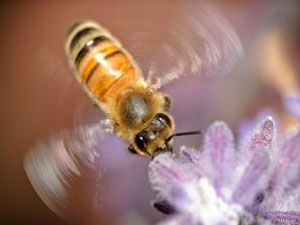《Nature》目录要览:2010-01-14出版
时间:2010-01-15 阅读: 我要评论:
《Nature》目录要览:2010-01-14出版
封面故事:控制昆虫进攻性信息素的神经回路
Identification of an aggression-promoting pheromone and its receptor neurons
in Drosophila
控制进攻性的信息素已在昆虫和小鼠身上被发现,但其中所涉及的神经回路却仍不清
楚。Liming Wung 和David Anderson发现,由雄性果蝇产生的挥发性信息素cVA
(cis-vaccenyl acetate)能通过激发表达一种名为Or67d 的cVA受体蛋白的嗅觉神经元
来促进雄性对雄性的攻击性。这个神经回路是通过由cVA促进的攻击性来调控雄性种群
密度及雄性果蝇从食物源的扩散所必需的。用经典遗传模型果蝇所进行的这项研究工作
(该工作利用Nature杂志最近一篇文章(12月3日一期Nature杂志的第562页)上所介绍
的视频技术进行,并且还以影片形式发布在go.nature.com/o8sRLs这个网址上),使有
关攻击行为的研究向详细的基因操纵和调查方法敞开了大门。本期封面所示为一只雄性
果蝇在对另一只走在它前面的雄性对手进行“翅膀威胁”,这是一种典型的攻击行为。
图片被转换成了假彩色,以更清楚地演示该行为。(Letter p. 227)封面图片:Eric
Hoopfer & Michael Maire, Caltech。
较重主族元素更像“过渡金属”(Elements in transition)
Main-group elements as transition metals
铝、硅和磷等较重主族元素的化学性质与硼、碳和氮等较轻主族元素很不相同,而关于
这个问题的讨论一直以与轻元素的对比为主。Philip Power对有关较重主族元素化学性
质研究方面的最新进展做了综述,这些进展显示,它们与过渡金属的共同之处多于与较
轻主族元素的共同之处。较重主族元素作为“过渡金属”的概念受到最新研究工作的支
持,这些研究表明,很多新化合物在温和条件下与H2、NH3、C2H4和CO等小分子发生反
应,并且还有用作催化剂的潜力。(Review p. 171)
大豆基因组完成测序(Soybean sequenced)
Genome sequence of the palaeopolyploid soybean
大豆是一种重要商业作物,既提供蛋白,又提供油料,其与固氮菌的共生关系使它成为
轮作系统中的一种高利润作物。现在,它的基因组已完成测序:它是第一个完成测序的
豆科植物基因组,也是用整基因组“猎枪”法测序的最大植物基因组(1.1
gigabases)。大豆的遗传史多彩多姿:基因组复制发生在距今5900万年和1300万年
间,产生一个复制率很高的基因组,其中近75%的基因以多版本存在。大豆基因组准确
序列的获得将加快改良大豆品种的培育。(Article p. 178)
癌症基因组的对比分析(Cancer genomes compared)
A small-cell lung cancer genome with complex signatures of tobacco exposure
/ A comprehensive catalogue of somatic mutations from a human cancer genome
本期Nature上介绍的两个癌症基因组序列让我们看到,下一代测序技术将会怎样为我们
提供有关突变过程、修复通道和与癌症发育相关的基因网络的信息。第一篇论文介绍从
一位小细胞肺癌患者的一个骨髓转移体系获取的一个细胞系的基因组。这种癌症是吸烟
诱导的典型癌症类型,其序列包含烟草的烟雾里所存在的超过60个致癌基因中其中一些
的突变特征。第二篇论文将一个黑素瘤细胞系的全部基因组序列与来自同一个体的一个
类淋巴母细胞系进行对比。这是对一种固体肿瘤所做的首次全面突变分析,它显示了反
映因暴露于紫外线所造成的DNA损伤的一个主导性突变特征。(Articles pp. 184,
191)
再造加氧酶的方法(Rebuilding Rubisco)
Coupled chaperone action in folding and assembly of hexadecameric Rubisco
“I-型二磷酸核酮糖羧化酶/加氧酶”(Rubisco form I)是自然界最丰富的蛋白,在
很多植物和藻青菌(蓝细菌)的光合作用中催化大气二氧化碳的吸收。它是生物技术工
作者的一个主要目标,因为如果其有限的催化效率能够提高,也许就有可能利用它来培
育改良的作物。利用试管重建和低温电子显微镜对来自名为“聚球藻”
(Synecho-coccus)的一种藻青菌加氧酶所做研究显示,GroEL/GroES伴侣蛋白的亚单
元折叠与亚单元组合因伴侣蛋白RbcX2而密切关联,后者起一个“分子订书针”的作
用。以这种方式来重建加氧酶的方法,也许可用作再造具有潜在更高效率加氧酶的一个
有用工具。(Article p. 197; News & Views)
大多数矮星系无凸起之谜已解开(Fighting the galactic bulge)
Bulgeless dwarf galaxies and dark matter cores from supernova-driven
outflows
观测表明,大多数矮星系几乎没有凸起部分,它们由一个转动的恒星盘组成,这个恒星
盘嵌入在一个由冷暗物质组成的巨大的、密度近乎恒定的核心晕中。这个结果与以冷暗
物质居支配地位为依据的模型所做预测不相符:按照这些模型来预测,我们所预测出的
星系总是有致密的球状恒星凸起和陡峭的中央暗物质剖面,因为低角动量重子和暗物质
会通过吸积和反复合并而沉降到星系中心。Governato等人进行的水动力模拟解决了这
个矛盾。来自超新星的强外流带走了低角动量气体,从而限制了凸起的形成,降低了星
系中心周围暗物质的密度。(Letter p. 203; News & Views)
“英仙座”双星系统Algol的星冕延时图像(A stellar corona mapped)
A large coronal loop in the Algol system
我们关于星冕的形态及时间演化的知识几乎全部基于对太阳的观测。现在,对“英仙
座”中近距双星系统Algol (Beta Persei)所做观测,首次提供了除太阳之外的一颗恒
星之“磁气圈”的详细延时图像。Algol由一颗“radio bright K”亚巨星和一颗主星
序B8星组成,这两颗星同在一个距离非常近、速度非常快的轨道中运行。理论预测,星
冕等离子体应局限于一个磁环结构中:观测结果显示存在一个大冕环,比所预测的要
大,高度约为一个亚巨星直径,其底部横跨在该亚巨星上,其顶点朝向B8星。(Letter
p. 207)
利用单次曝光生成三维图像的方法(An added dimension)
Three-dimensional structure determination from a single view
要生成一个物体的三维图像,一般必须从多个角度来测量它或对其进行断层扫描。现
在,苗建伟(音译)及其同事开发出一种利用单色入射光束通过单次曝光来生成纳米尺
度三维图像的方法。这种新方法被称为“Ankylography”(这个单词来自希腊语的
ankylos和graphein:前者的意思是“弯曲的”;后者的意思是“书写”),它与X-射
线衍射显微镜技术相似:一束相干X-射线光束被照射到一个具有球形表面的目标上,然
后将二维衍射图重建为一个完整的三维结构。随着检测器技术的进一步发展和进步,这
种方法可能会成为自然科学和生命科学中的一个有用工具。(Letter p. 214)
青藏高原附近山系对南亚季风形成的影响(Monsoon from the mountains)
Dominant control of the South Asian monsoon by orographic insulation versus
plateau heating
从青藏高原以干热和水气形式散发出的热长期被认为是南亚夏天季风的主要推动力,但
新的研究工作表明,事实上附近山脉才是主要影响因素。William Boos 和匡志明(音
译)利用一个大气模型发现,只要喜马拉雅山和周围山系仍然存在,将青藏高原变平对
该季风影响甚微。该高原的确能够沿其南缘局部增强降雨,但驱动大尺度季风环流的是
热而潮湿的空气(这些空气被喜马拉雅山与较冷、较干燥的空气隔开)在印度上空的积
聚。(Letter p. 218; News & Views)
巢寄生中寄主与入侵者怎样斗智斗勇(Best of the nest)
Coots use hatch order to learn to recognize and reject conspecific brood
parasitic chicks
被巢寄生鸟当作目标的很多鸟类已学会拒绝寄生鸟的卵,但它们却很少有排斥寄生鸟的
幼鸟的——如果这些幼鸟得以孵化出来的话,即便这些幼鸟与它们自己的幼鸟在大小上
的差别显而易见。同一物种内的寄生是较为罕见的一种巢寄生形式,在其中幼鸟拒绝的
确会发生。研究人员对此进行了一系列幼鸟交叉养育实验,实验对象是美洲黑鸭。实验
结果表明,父母利用一窝中的第一只作为一个模板来孵化,并以此作为依据来判断以后
所孵化的是否有可能是潜在入侵者的后代。这种学习规则也许可解释为什么幼鸟识别作
为针对鸟类巢寄生的一种寄主防卫手段令人迷惑不解地不存在:对大多数物种间寄生形
式的寄主来说,幼鸟识别可能是起反作用的,因为入侵者通常孵化得早,有很好的机会
成为同窝幼鸟的模板。(Letter p. 223; News & Views)
“气孔蛋白”在拟南芥中被发现(Extra stomata in prospect)
Stomagen positively regulates stomatal density in Arabidopsis
作为植物叶子表皮组织与大气之间交换二氧化碳的门户,气孔是植物生理中的关键要
素。因此,它们也是植物的遗传及环境调控的焦点,但此前一直没有发现气孔发育的正
信号作用因子。现在,一种具有气孔诱导性质的蛋白已在拟南芥中被发现。该蛋白被称
为“气孔蛋白”(Stomagen),它是一种富含半胱氨酸的肽,见于新叶子内组织(叶
肉)层中,在那里它可能通过与细胞表面受体TMM结合来起动气孔细胞系的形成。这一
发现提出一个可能性:“气孔蛋白”也许可用来培育具有高气孔密度、从而具有高二氧
化碳吸收容量的作物和树木——不仅可以通过基因工程方法来培育,而且可通过喷洒合
成“气孔蛋白”或相关合成肽的方法来培育。(Letter p. 241)
----------------------
NEWS AND VIEWS
----------------------
Climate: A moist model monsoon pp163-164
Received wisdom about the main driver of the South Asian monsoon comes
into question with a report that tests the idea that the Himalayas, not
the Tibetan plateau, are the essential topographic ingredient.
Mark A. Cane
doi:10.1038/463163a
http://www.nature.com/nature/journal/v463/n7278/full/463163a.html
Biochemistry: Tackling unintelligent design pp164-165
The key enzyme in photosynthesis, Rubisco, is a relic of a bygone age.
The ability to assemble Rubisco in the test tube offers the prospect of
genetically manipulating the enzyme to make it fit for the modern world.
R. John Ellis
doi:10.1038/463164a
http://www.nature.com/nature/journal/v463/n7278/full/463164a.html
Behavioural ecology: Learn to beat an identity cheat pp165-167
Parent birds commonly face the problem of distinguishing their own brood
from foreign chicks. Learnt chick-recognition evolves only when parents
do not mistakenly learn to reject their own young.
Rebecca Kilner
doi:10.1038/463165a
http://www.nature.com/nature/journal/v463/n7278/full/463165a.html
50 & 100 years ago p166
doi:10.1038/463166a
http://www.nature.com/nature/journal/v463/n7278/full/463166a.html
Galaxy formation: Gone with the wind? pp167-168
Windy weather is forecast where stars are forming. Numerical simulations
show that these winds can reshape dwarf galaxies, reconciling their
properties with the prevailing theory of galaxy formation.
Marla Geha
doi:10.1038/463167a
http://www.nature.com/nature/journal/v463/n7278/full/463167a.html
Bioinorganic chemistry: Model offers intermediate insight pp168-169
Chemical models of enzymes' active sites aid our understanding of
biological reactions. Such a model of a reaction intermediate promises
to advance our knowledge of the biochemistry of iron-containing haem
enzymes.
Kenneth D. Karlin
doi:10.1038/463168a
http://www.nature.com/nature/journal/v463/n7278/full/463168a.html
Neuroscience: Astrocytes as aide-memoires pp169-170
Memory formation is known to occur at the level of synaptic contacts
between neurons. It therefore comes as a surprise that another type of
brain cell, the astrocyte, is also involved in establishing memory.
Mirko Santello and Andrea Volterra
doi:10.1038/463169a
http://www.nature.com/nature/journal/v463/n7278/full/463169a.html
----------------------
REVIEW
----------------------
Main-group elements as transition metals pp171-177
Philip P. Power
doi:10.1038/nature08634
Abstract:
http://www.nature.com/nature/journal/v463/n7278/abs/nature08634.html
Article:
http://www.nature.com/nature/journal/v463/n7278/full/nature08634.html
----------------------
ARTICLES
----------------------
Genome sequence of the palaeopolyploid soybean pp178-183
Soybean is an important crop plant, providing seed protein and oil and
fixing atmospheric nitrogen through symbioses with soil-borne
microorganisms.
Using a whole-genome shotgun approach, its 1.1-gigabase genome is now
sequenced and integrated with physical and high-density genetic maps to
create a chromosome-scale draft sequence assembly.
Jeremy Schmutz et al.
doi:10.1038/nature08670
Abstract:
http://www.nature.com/nature/journal/v463/n7278/abs/nature08670.html
Article:
http://www.nature.com/nature/journal/v463/n7278/full/nature08670.html
A small-cell lung cancer genome with complex signatures of tobacco
exposure pp184-190
Tobacco smoke contains more than sixty carcinogens that bind and mutate
DNA. Here, massively parallel sequencing technology is used to sequence
a small-cell lung cancer cell line, exploring the mutational burden
associated with tobacco smoking. Multiple mutation signatures from the
cocktail of carcinogens in tobacco smoke are found, as well as evidence
of transcription-coupled repair and another, more general,
expression-linked repair pathway.
Erin D. Pleasance et al.
doi:10.1038/nature08629
Abstract:
http://www.nature.com/nature/journal/v463/n7278/abs/nature08629.html
Article:
http://www.nature.com/nature/journal/v463/n7278/full/nature08629.html
A comprehensive catalogue of somatic mutations from a human cancer genome
pp191-196
Here, the genomes of a malignant melanoma and a lymphoblastoid cell line
from the same person are sequenced, providing the first comprehensive
catalogue of somatic mutations from an individual cancer. The data provide
insight into the causes of tumour formation and the development of the
cancer genome, with the dominant mutational signature reflecting DNA damage
due to ultraviolet light exposure.
Erin D. Pleasance et al.
doi:10.1038/nature08658
Abstract:
http://www.nature.com/nature/journal/v463/n7278/abs/nature08658.html
Article:
http://www.nature.com/nature/journal/v463/n7278/full/nature08658.html
Coupled chaperone action in folding and assembly of hexadecameric Rubisco
pp197-202
Form I Rubisco, one of the most abundant proteins in nature, catalyses
the fixation of atmospheric CO2 in photosynthesis. The limited catalytic
efficiency of Rubisco has sparked extensive efforts to re-engineer the
enzyme to enhance agricultural productivity. To bring this goal closer,
the formation of cyanobacterial form I Rubisco is now analysed by in
vitro reconstitution and cryo-electron microscopy.
Cuimin Liu et al.
doi:10.1038/nature08651
Abstract:
http://www.nature.com/nature/journal/v463/n7278/abs/nature08651.html
Article:
http://www.nature.com/nature/journal/v463/n7278/full/nature08651.html
----------------------
LETTERS
----------------------
Bulgeless dwarf galaxies and dark matter cores from supernova-driven
outflows pp203-206
The properties of 'dwarf' galaxies have long challenged the cold dark
matter (CDM) model of galaxy formation, as the properties of most observed
dwarf galaxies contrast with models based on the dominance of CDM. Here,
hydrodynamical simulations (assuming the presence of CDM) are reported
in which the analogues of dwarf galaxies - bulgeless and with
shallow central dark-matter profiles - arise naturally.
F. Governato et al.
doi:10.1038/nature08640
Abstract:
http://www.nature.com/nature/journal/v463/n7278/abs/nature08640.html
Article:
http://www.nature.com/nature/journal/v463/n7278/full/nature08640.html
A large coronal loop in the Algol system pp207-209
The close binary Algol system contains a radio-bright KIV sub-giant
star in a very close and rapid orbit with a main sequence B8 star.
Evidence points to the existence of an extended, complex coronal
magnetosphere originating at the cooler K subgiant, but the detailed
morphology of the subgiant's corona and its possible interaction with
its companion are unknown. Multi-epoch radio imaging of the Algol
system now reveals a large coronal loop suggestive of a persistent
asymmetric magnetic field structure aligned between the two stars.
W. M. Peterson, R. L. Mutel, M. Gudel and W. M. Goss
doi:10.1038/nature08643
Abstract:
http://www.nature.com/nature/journal/v463/n7278/abs/nature08643.html
Article:
http://www.nature.com/nature/journal/v463/n7278/full/nature08643.html
Time-reversal symmetry breaking and spontaneous Hall effect without
magnetic dipole order pp210-213
Chiral spin liquids are a hypothetical class of spin liquids in which
time-reversal symmetry is macroscopically broken even in the absence of
an applied magnetic field or any magnetic dipole long-range order. Although
such spin-liquid states were proposed more than two decades ago, they
remain elusive. Here, evidence is presented that the time-reversal
symmetry can be broken spontaneously on a macroscopic scale in the
absence of magnetic dipole long-range order, suggesting the emergence
of a chiral spin liquid.
Yo Machida et al.
doi:10.1038/nature08680
Abstract:
http://www.nature.com/nature/journal/v463/n7278/abs/nature08680.html
Article:
http://www.nature.com/nature/journal/v463/n7278/full/nature08680.html
Three-dimensional structure determination from a single view pp214-217
Most schemes for three-dimensional (3D) structure determination of an
object require multiple measurements over various orientations, or a
means of scanning it section by section. A 3D imaging modality, termed
ankylography, is now presented that under certain circumstances enables
complete 3D structure determination from a single diffraction measurement.
This approach could find broad applications in the physical and life
sciences.
Kevin S. Raines et al.
doi:10.1038/nature08705
Abstract:
http://www.nature.com/nature/journal/v463/n7278/abs/nature08705.html
Article:
http://www.nature.com/nature/journal/v463/n7278/full/nature08705.html
Dominant control of the South Asian monsoon by orographic insulation
versus plateau heating pp218-222
The elevation of the Tibetan plateau is thought to cause its surface to
serve as a heat source that drives the South Asian summer monsoon,
potentially coupling uplift of the plateau to climate changes on geologic
timescales. Here, however, an atmospheric model is used to show that
flattening of the Tibetan plateau has little effect on the monsoon,
provided that the narrow orography of the Himalayas and adjacent
mountain ranges is preserved.
William R. Boos and Zhiming Kuang
doi:10.1038/nature08707
Abstract:
http://www.nature.com/nature/journal/v463/n7278/abs/nature08707.html
Article:
http://www.nature.com/nature/journal/v463/n7278/full/nature08707.html
Coots use hatch order to learn to recognize and reject conspecific brood
parasitic chicks pp223-226
Why hosts of brood parasites generally fail to recognize parasitic
offspring after they have hatched from the egg, even when the host and
parasitic chicks are very different, remains a puzzle. American coots
are now shown to use first-hatched chicks in a brood as referents to
learn to recognize their own chicks and discriminate against later-hatched
parasitic chicks. A lack of reliable information may explain why the
evolution of such chick recognition is not more common.
Daizaburo Shizuka and Bruce E. Lyon
doi:10.1038/nature08655
Abstract:
http://www.nature.com/nature/journal/v463/n7278/abs/nature08655.html
Article:
http://www.nature.com/nature/journal/v463/n7278/full/nature08655.html
Identification of an aggression-promoting pheromone and its receptor
neurons in Drosophila pp227-231
Although aggression is known to be regulated by pheromones in many animal
species, in no system have the pheromones, their receptors and corresponding
sensory neurons been identified. Here, 11-cis-vaccenyl acetate (cVA), a
volatile pheromone produced by male fruitflies, is shown to promote
male-to-male aggression through the activation of olfactory sensory
neurons expressing the receptor Or67d.
Liming Wang and David J. Anderson
doi:10.1038/nature08678
Abstract:
http://www.nature.com/nature/journal/v463/n7278/abs/nature08678.html
Article:
http://www.nature.com/nature/journal/v463/n7278/full/nature08678.html
Long-term potentiation depends on release of d-serine from astrocytes
pp232-236
The involvement of astroglia in long-term potentiation (LTP) of synaptic
transmission remains controversial. Clamping internal Ca2+ in individual
astrocytes in the CA1 area of the hippocampus is now shown to block LTP
induction at nearby excitatory synapses through an effect on the
N-methyl-D-aspartate receptor. This LTP blockade can be reversed by
exogenous D-serine, normally released in a Ca2+-dependent manner from
astrocytes.
Christian Henneberger, Thomas Papouin, Stephane H. R. Oliet and Dmitri A.
Rusakov
doi:10.1038/nature08673
Abstract:
http://www.nature.com/nature/journal/v463/n7278/abs/nature08673.html
Article:
http://www.nature.com/nature/journal/v463/n7278/full/nature08673.html
KAP1 controls endogenous retroviruses in embryonic stem cells pp237-240
Much of the mammalian genome is derived from retroelements, a significant
proportion of which are endogenous retroviruses (ERVs). ERVs are
transcriptionally silenced during early embryogenesis by histone and DNA
methylation, but the initiators of this process are largely unknown.
Here, deletion of KAP1 is shown to lead to a marked upregulation of a
range of ERVs in mouse embryonic stem cells and in early embryos.
Helen M. Rowe et al.
doi:10.1038/nature08674
Abstract:
http://www.nature.com/nature/journal/v463/n7278/abs/nature08674.html
Article:
http://www.nature.com/nature/journal/v463/n7278/full/nature08674.html
Stomagen positively regulates stomatal density in Arabidopsis pp241-244
Stomata are specialized structures in the epidermal layer of leaves that
regulate the exchange of gases between the plant and the atmosphere. One or
more positive intercellular signalling factors are assumed to be involved
in stomatal development, but their identities remain elusive. A novel
secretory protein - named stomagen - is now shown to be just such a factor;
it is conserved among vascular plants and positively regulates stomatal
density.
Shigeo S. Sugano et al.
doi:10.1038/nature08682
Abstract:
http://www.nature.com/nature/journal/v463/n7278/abs/nature08682.html
Article:
http://www.nature.com/nature/journal/v463/n7278/full/nature08682.html
An allosteric mechanism of Rho-dependent transcription
termination pp245-249
Rho is a general transcription termination factor in bacteria, but the
mechanism by which it disrupts the RNA polymerase (RNAP) elongation complex
is unknown. Here, Rho is shown to bind tightly to the RNAP throughout the
transcription cycle, with the formation of the RNAP-Rho complex being
crucial for termination. Furthermore, RNAP is proposed to have an active
role in Rho termination through an allosteric mechanism.
Vitaly Epshtein, Dipak Dutta, Joseph Wade and Evgeny Nudler
doi:10.1038/nature08669
Abstract:
http://www.nature.com/nature/journal/v463/n7278/abs/nature08669.html
Article:
http://www.nature.com/nature/journal/v463/n7278/full/nature08669.html
Structural basis for the photoconversion of a phytochrome to the activated
Pfr form pp250-254
Phytochromes regulate numerous photoresponses in plants and microorganisms
through their ability to photointerconvert between a red-light-absorbing,
ground state (Pf) and a far-red-light-absorbing, photoactivated state (Pfr).
The structures of several phytochromes as Pf have been determined
previously;
here, the three-dimensional solution structure of the bilin-binding domain
as Pfr is described. The results shed light on the structural basis for
photoconversion to the activated Pfr form.
Andrew T. Ulijasz et al.
doi:10.1038/nature08671
Abstract:
http://www.nature.com/nature/journal/v463/n7278/abs/nature08671.html
Article:
http://www.nature.com/nature/journal/v463/n7278/full/nature08671.html
环境科学之家(http://www.eschina.org.cn http://www.esresearch.cn)
| 《Nature》目录要览 — 2011-04-28出版 |
| 《Nature》目录要览:2011-01-20出版 |
| 《Nature》目录要览:2010-12-23出版 |
| 《Nature》目录要览:2010-12-16出版 |
| 《Nature》目录要览:2010-12-09出版 |
| 《Nature》目录要览:2010-12-02出版 |
特别声明:本文转载仅仅是出于传播信息的需要,版权归原作者所有,并不意味着代表本网站观点或证实其内容的真实性; 如其他媒体、网站或个人从本网站转载使用,须保留本网站注明的“来源”,并自负版权等法律责任; 作者如果不希望被转载或者联系转载稿费等事宜,请与我们接洽:service#environmentor.cn(请将#改为@)。
来源: 作者: (环境人 Environmentor.Cn)





